Fine Tuning Mobile Internet
What's the first thing you do when you get to your new RV camp spot? Work on setting up, fine tuning and optimizing your mobile internet to get online!
Maybe you scored an awesome site right on the beach, or maybe you snagged one with amazing mountain views. Or maybe you’re in a crowded RV park or marina, but in a city that you love.
No matter where you’ve parked your home, one of the first things you probably do is get set up. Put the levelers out, hook up the electricity and water, and get your mobile internet optimized for this location.
Heck, if you're a digital nomad, you might even skip the other stuff and just go straight to fine tuning your mobile internet setup to jump right online.
You might get lucky, and whatever mobile internet configuration you used at your last location works great at this new one without any fine tuning. Score! You're ready to surf (or maybe go surfing).
But what if things are different at this location - the signal is weaker or just not providing the speeds you want? In that case, you may have some efforts ahead in fine tuning your mobile internet setup for optimal performance.
If you're traveling with an arsenal of mobile internet gear to try at each location, how do you go about fine tuning that will work best at this new location?
If you're a member, please log in above to see your exclusive content.
Don't need a membership? Other ways you can support our work here:
-
As seen in our videos!
-
Get a FREE Month of Starlink!
And our team will get one too!
-
Get a FREE Month of T-Mobile Unlimited Data
Join the Calyx Institute, and get a bonus month - and we do too!
-
Save $20 on Visible
Verizon's prepaid phone plan, we also get a $20 credit.
-
Leave a Tip!
Send our team some beer money!!
-
Share About Us!
Link to our content, tell others about MIRC. It's Free!
It is with huge gratitude to our members for making the free unbiased educational content on our site possible. We're not sponsored, you'll find no 3rd party ads and we don't sell gear or data plans.
Our members get exclusive access to our in-depth content, classrooms, vendor discounts (that can save you more than membership!), alerts, insider info and interactive guidance. They can even book private advising sessions.
If mobile internet is an important part of your lifestyle, consider helping make MIRC possible by joining or supporting our mission.
Mobile Internet Fine Tuning Overview
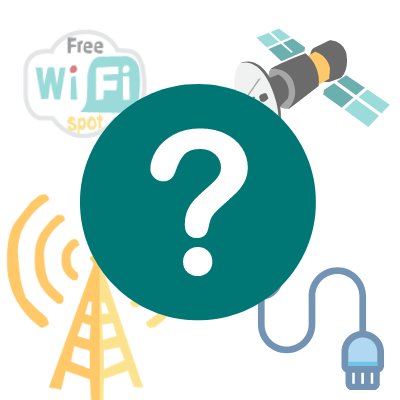 Just like hooking up your power at an RV park or marina, fine tuning your mobile internet connection is just part of the setup process.
Just like hooking up your power at an RV park or marina, fine tuning your mobile internet connection is just part of the setup process.
Whereas your electricity and water hookups are pretty straight-forward and you generally follow the same process at each location, the steps you will take for fine tuning your mobile internet connection may vary more from location to location.
Each location is likely to present its own unique challenges for establishing a reliable connection, and you're likely carrying with you multiple cellular plans, antennas, modems, routers, a boosters, & a Starlink or satellite plan in your mobile internet arsenal.
Which means you might need to try them all, experiment with different configurations, or even consider your back-up options.
Basic Steps for Fine Tuning Your Mobile Internet
While the actual steps you take each time may vary, there tends to be a general order of operations in fine tuning which of your mobile internet configurations will be most usable at a particular location.
Some steps to guide you:
- Determine what types of mobile internet options are available in your location.
- Survey the situation by testing and fine tuning your mobile internet options.
- If needed, experiment with signal enhancing gear & configurations.
- Choose your mobile internet setup, and enjoy.
- Consider alternatives if all else fails.

Fine Tuning Mobile Internet Starts with Travel Planning
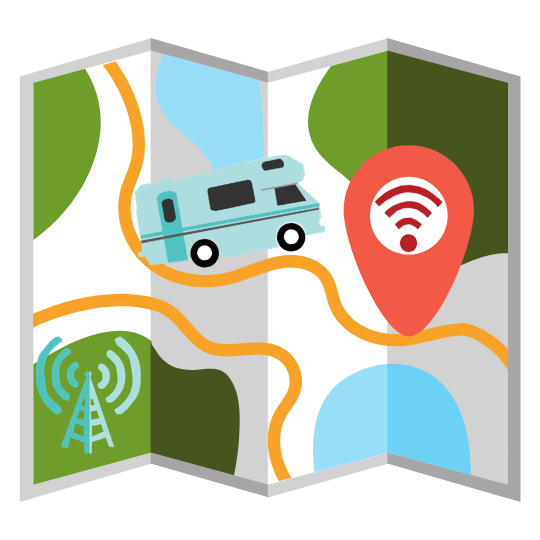 Having the right gear and plans is only part of the equation for successful connectivity on the road or water.
Having the right gear and plans is only part of the equation for successful connectivity on the road or water.
Planning your travels around your connectivity options is just as important.
Knowing what to expect will give you an idea before you arrive as to what should work at your next location. You can ask for feedback from others who have been there, or check review sites for any discussions of what the connectivity options will be.
Is there any cellular signal in the area? Is the campground Wi-Fi usable? Are the sites heavily wooded, therefore making Starlink or other satellite options difficult to use?
Once you have some of this information, you can then focus on fine tuning your mobile internet setup when you get there.
If the available options aren't good, you may need to go to a different location, or plan to take a few days off of being connected.
We have a guide to with resources for researching your options in advance:
Guide to Travel Planning Around Connectivity
Many nomads soon discover that redundancy is another critical component to success on the road & often better to use a strong signal on a redundant carrier vs. trying to enhance a weak signal. The more options you have on board to try, the more likely it is you'll be able to get connected and not have to skip locations you want to visit.
We feel redundancy is so beneficial, that we have dedicated an entire guide to building a redundant mobile internet arsenal, which you can view here:
The Importance of Mobile Internet Redundancy
If you've planned well both in your travels and in building your mobile internet arsenal, you should be able to arrive with confidence that just a bit of fine tuning is all that is needed when you arrive.
Testing Your Mobile Internet Connections
Once you’ve arrived to your location, it’s time to start actually testing your mobile internet options as part of your fine tuning process.
The first and easiest thing to do is just to see what your internet performance is with what you already have setup - perhaps what was working best at your last location, or your default configuration.
 If that's not giving you the results you need, or perhaps you've already nearly reached any bandwidth caps you have on that option - it's time to test your other options.
If that's not giving you the results you need, or perhaps you've already nearly reached any bandwidth caps you have on that option - it's time to test your other options.
Perhaps you have cellular plans and equipment with different carriers. You’ll want to test the connection for each, as different carriers can have different performance in the same location. Try each option 'as is'. That could be just hot spotting off your smartphone, surfing on your tablet, using your mobile hotspot device or using your embedded router with your default roof antenna.
If you're in a campground or marina that’s providing free Wi-Fi, it might be worth connecting to your nearest access point and seeing how the connection performs. Or maybe you have Starlink and you're in a site without a lot of trees or other obstructions and can test the performance of that connection.
Cycle through each option you have on board to survey what you're starting with to establish a baseline. Write down the numbers if you like, keep a spreadsheet or just make a mental note of what each option presents.
Remember, the bars displayed on your device only tell part of the story and aren't necessarily indicative of the actual performance you'll get. In order to get a more accurate assessment, performing speed tests is highly recommended.
It helps to know what your absolute minimum performance is in download, upload, and ping time for that tasks you need to get done.
You may get lucky at this step and find a mobile internet option without further fine tuning works great. Consider that things can change drastically throughout the day, or on weekends, as the number of people online changes.
For more on Testing and Understanding Your Mobile Internet Speeds:
Testing & Understanding Your Mobile Internet Speeds
Bring in Specialty Gear & Experiment
Once you have baseline on your mobile internet options, if you're not getting the performance you need it's time for the next step by fine tuning with any more advanced enhancing options you have at your disposal.
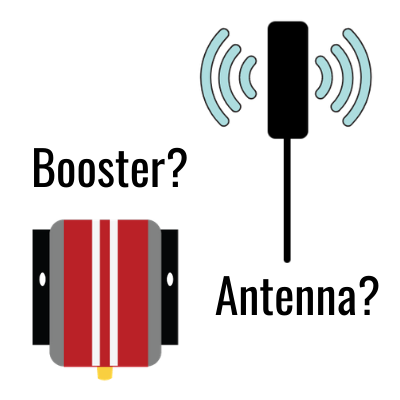 The advanced signal enhancing gear for a cellular connection might be higher gain antennas that you need dig out of storage and setup, or firing up a cellular booster.
The advanced signal enhancing gear for a cellular connection might be higher gain antennas that you need dig out of storage and setup, or firing up a cellular booster.
For a Wi-Fi connection, a Wi-Fi extending antenna may be used to reach a further away access point than your devices alone can connect reliably to.
Repeat your testing on each of your options with and without this extra gear to see if you can improve the situation.
Quick Tip: Some antennas are omnidirectional, meaning they can pick up a signal from any direction, but some are directional - meaning they need to be aimed towards the signal source in order to get the best result.
If you have more advanced mobile internet gear, you might also have other tricks up your sleeve for fine tuning - like locking cellular frequency bands, bonding multiple connections together, or balancing your load across different connections.
If you're still not getting the performance you need, do some basic trouble shooting like checking that antenna connections are secure, reboot devices, check your battery health on portable devices, and experiment with different Wi-Fi settings to avoid channel interference that might be clobbering your performance.
For more on Optimizing Cellular Signals:
Understanding and Optimizing Your Cellular Data Performance
For more on Wi-Fi Extending:
Using Wi-Fi as a Mobile Internet Source
And for those ready to dive into the geekier world of signal enhancement:
Combing Connections: Bonding and Load Balancing
Each time you add or tweak your setup, you'll want to run a speed test or two to see if what you've done has increased the functionality of your change - or actually made it worse.
Remember: When you make a change, you should run a test - then compare.
Choose Your Setup & Enjoy
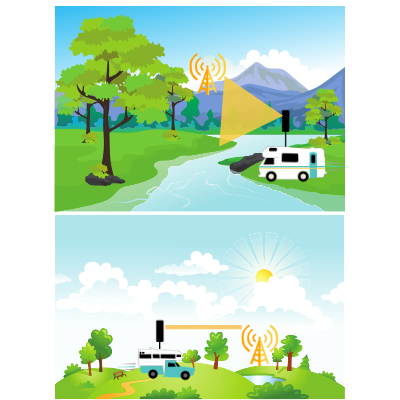 There are likely endless combinations and settings you can play around with to enhance things. Keep the end goal in mind however - to find a usable configuration for this location.
There are likely endless combinations and settings you can play around with to enhance things. Keep the end goal in mind however - to find a usable configuration for this location.
Fiddling and fine tuning a mobile internet setup endlessly may be fun for some, but most of us probably just want to get online, get our stuff done, and spend our time exploring our new locations.
So get things dialed in as best you can without pulling your hair out and make note of what other options are workable in your testing. That way you can revert to them if your setup degrades during your stay (it can happen).
But most importantly.. ENJOY!
When All Else Fails
Unfortunately, there may be some RV stops in your travels, where no matter how much fine tuning you do, or how much fancy mobile internet equipment you have, you can't get a usable connection. Know what your options are in these situations.
Will you need to bail on this location entirely, or can you adapt to poor or no connectivity?
If you're in a campground/marina, or near a city, one option may be to just walk over to the campground or marina office to get closer to the Wi-Fi source.
If you have a vehicle or bike, you may need to plan a trip into town to find internet at a library, café or just better cell signal. Or perhaps you just need to take a little hike up a nearby hill to where the signal is more abundant.
If none of those are options, and you absolutely need to have internet access, you may have to choose a different location.
In some situations, just moving sites within a campground or boondocking/anchoring location can make a world of difference - especially if there are a lot of trees, terrain, or signal blocking obstacles around. You might go scope out the options with a smartphone or portable hotspot device to see if there's better signal to be found - and then make arrangements to move.
If moving isn't an option, and you can't get a workable internet connection, then hopefully you packed some beer or wine to drown your internet sorrows.
We've published a guide to thinking outside the box when your typical set of tools just is not cutting it:
Thinking Outside the Box: Alternative to Mobile Internet
Cross Country Van Trip Recap
MIRC founders, Chris and Cherie, took a cross country van trip in which they traveled with data plans from Verizon, AT&T, T-Mobile, Dish and Starlink. They traveled with the latest high end routers, modems and antennas. At each stop they recorded what mobile internet connection worked best.
They hosted a Live YouTube video where they discussed the results of what worked best across the country. That session is archived here for you to watch.
We also go into more in depth reviews of case studies of this trip and other trips for our members below.
Member Exclusive Content Below
Member Exclusive Content In This Guide
Has this guide been helpful so far?
Well.. there's a lot more below available to our members. As well as dozens of other guides like this, videos, classrooms, forums, webinars and more. All specifically created for helping keep RVers, cruisers and nomads online.
Consider Becoming a Member
If mobile internet is an important part of your lifestyle, a membership can help keep you connected with these exclusive benefits:
- in-depth exclusive content
- interactive guidance
- vendor discounts
- alerts & insider tips
- classroom
- community
Free Content Like This Made Possible By Our Members!
We are community funded via our premium membership program - allowing us to focus on creating unbiased quality, in-depth, constantly updated content. We don't accept 3rd party advertising, we're not sponsored and we don't sell 'stuff'.
Already a member?
Log in to continue with this guide.
Check out the Topics Covered in the Member Section:
Settings & Setup Tips
Case Study 1: Cross Country Van Trip
In Late 2023, Chris & Cherie took a cross country van trip from Florida to Oregon and then they continued on to AZ to meet up with their bus. They traveled back to Florida in early 2024.
This trip was documented thoroughly with what solutions worked at each stop and how internet options can change very quickly when you are on the move. It includes when Starlink came to the rescue or times it wouldn't have worked well or wasn't needed. They go into detail on how much tweaking of internet solutions was needed to get things to work at the next stop.
Case Study 2: Optimizing on the Blue Ridge Parkway
During the Summer of 2021, Chris & Cherie traveled in their 2020.5 Winnebago Travato GL van. Members have access to details of optimizations made at each of the locations stopped at - including test data, observations, and tips.
Summary
Knowing and understanding the various capabilities of the different types of equipment you have on board will help you determine what the best setup is going to be for each new location you visit. We always recommend doing as much research as you can before you arrive at a location and then making sure you have the right pieces of equipment and plans in your arsenal to ensure you can stay connected.
Explore the Resource Center
Have Questions?
Join our 'Library Desk':
Internet for RVers & Cruisers Facebook Group
We cross post news articles and guides, and can help point you in the right direction to our content here on the resource center.
It is with gratitude to our premium members that we're able to offer our free content - and for that, they also have access to our member Q&A areas for more in-depth guidance.
Become a Member
 The MIA is our premium membership - designed for those who consider mobile internet an important part of their lifestyle.
The MIA is our premium membership - designed for those who consider mobile internet an important part of their lifestyle.
In thanks for making content like this possible, we offer a bunch of additional perks. From interactive guidance, in-depth member exclusive content, discounts, alerts, classroom and ability to book private advising sessions.
Stay In the Know
We're constantly tracking the industry and analyzing new developments for mobile travelers. If you'd like to receive updates, we offer several ways:
- Subscribe to our free monthly newsletter
- Subscribe to our News Stories RSS Feed
- Subscribe to our YouTube Channel
- Follow our Facebook Page
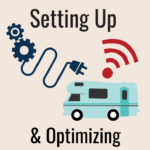
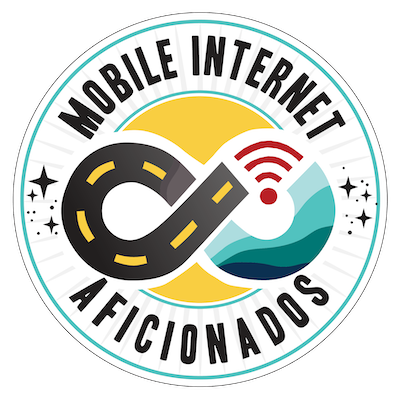
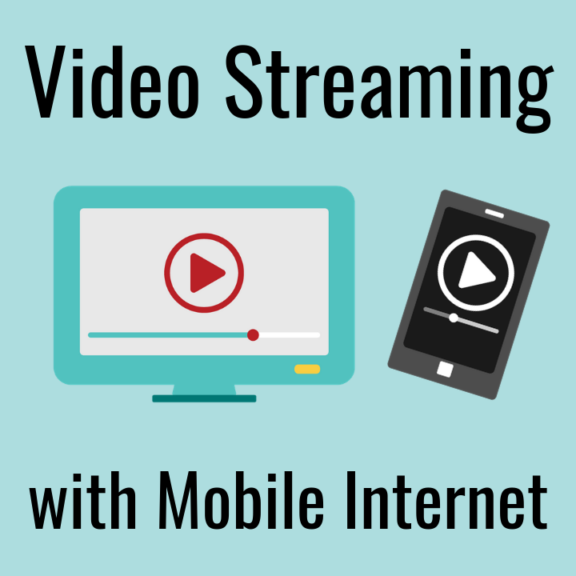
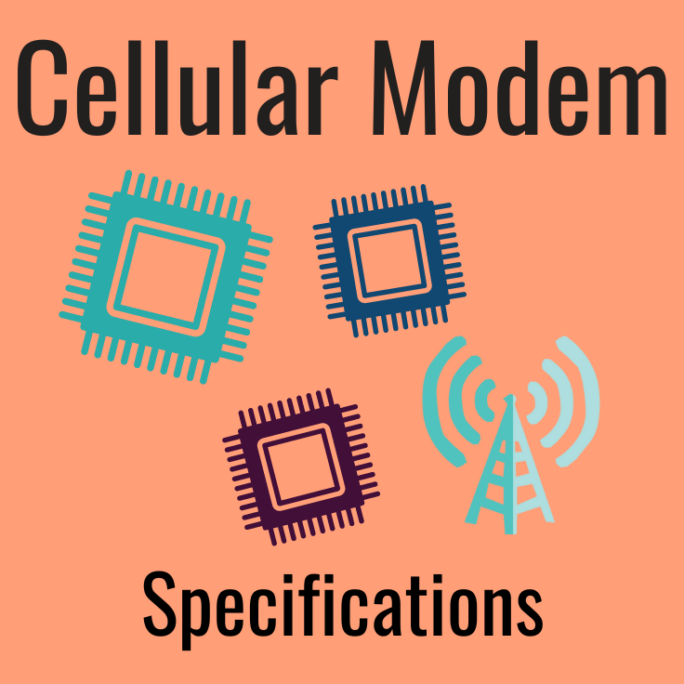
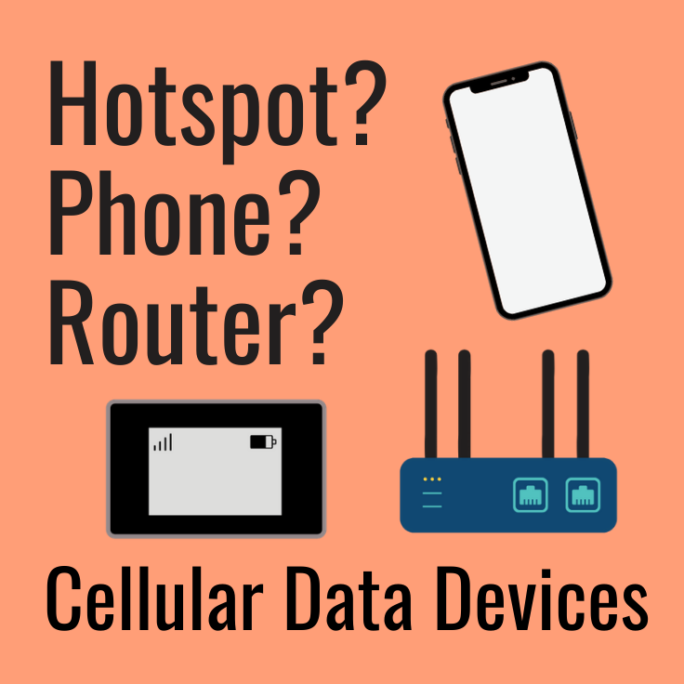


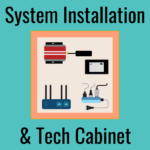
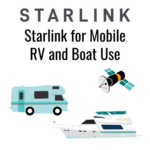
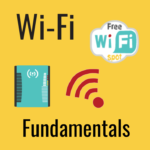
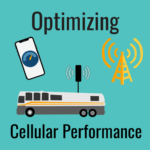
 Mobile Internet Resource Center (dba Two Steps Beyond LLC) is founded by Chris & Cherie of
Mobile Internet Resource Center (dba Two Steps Beyond LLC) is founded by Chris & Cherie of